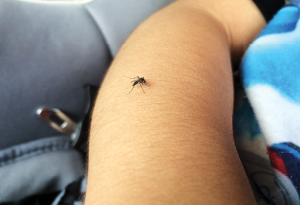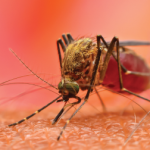
fi3/shutterstock.com
Doctors have had few options to treat the chronic rheumatoid arthritis-like symptoms associated with chikungunya virus infections beyond over-the-counter pain relievers. A recent study in Science Translational Medicine has spurred new optimism by finding that a combination therapy—the anti-rheumatic drug abatacept paired with a chikungunya-neutralizing monoclonal antibody—abolished acute symptoms in infected mice.1
The strategy must clear multiple hurdles before it can become a viable intervention in human patients. Mark Heise, PhD, a geneticist who studies viral pathogenesis at the University of North Carolina in Chapel Hill, cautions that the course of a chikungunya infection differs between humans and mice, the latter of which aren’t natural hosts for the virus. Even so, Dr. Heise, who wasn’t involved with the new study but previously collaborated with one of its co-authors, calls it “an important advance” for the field. “I think it’s a really good stepping off point for thinking about these sort of combination therapies,” he says, “especially for people who may be at risk for developing chronic disease manifestations.”
Background
Mosquito-borne chikungunya, which debuted in the Western Hemisphere in late 2013, has since sickened more than 1.8 million people in the Americas. Apart from a few cases in southern Florida, however, the thousands of chikungunya infections seen in the U.S. to date have all been acquired outside the country.
Jonathan Miner, MD, PhD, the new study’s lead author and an instructor in medicine at Washington University in St. Louis, previously showed that the virus can cause joint pain and swelling that bears a striking resemblance to rheumatoid arthritis.2 The travel history of patients, he emphasizes, can be critical in distinguishing between the two diseases.
From animal studies of the viral infection’s acute phase, chikungunya seems to replicate to high levels within the blood and then invades the joints, where it can replicate as well. Within three days of infection, human patients can exhibit symptoms such as a high fever, joint pain, morning stiffness and inflammation. “I’ve seen patients who had such severe pain that they were unable to walk. It can be really debilitating,” Dr. Miner says. Patients may also experience muscle pain, a rash and conjunctivitis.
Arthritis, however, is chikungunya’s signature symptom, appearing in about 90% of cases. Roughly 60% of patients continue having symptoms a year or more after the infection—well after the virus is no longer detectable in the blood.
The Study
Dr. Miner and co-author Deborah Lenschow, MD, PhD, an associate professor of medicine and fellow rheumatologist at Washington University, began studying the virus and its effects when multiple patients began showing up at their rheumatology clinic in 2014 complaining of severe joint and muscle pain.
The patients, they discovered, had all traveled to Haiti for mission work around the same time earlier that year—in the midst of a major chikungunya outbreak. Of the 10 who eventually tested positive for the virus, eight developed persistent symptoms matching the ACR criteria for seronegative rheumatoid arthritis. “Clinically, until you got that travel history, it looked indistinguishable from a seronegative RA patient who was presenting for the first time,” Dr. Lenschow says.
The uncanny clinical similarities and T cell activation in both diseases, as well as the difficulty in treating some chikungunya patients, prompted a second study to assess the effects of existing disease-modifying anti-rheumatic drugs (DMARDs), in mice. Without a good understanding of how long infectious particles might persist in a patient’s joints, doctors had been wary of trying any DMARDs in human patients. “If we treat them with immunosuppressive drugs, are we going to make the virus grow to higher levels and would the patients do worse?” Dr. Lenschow says. “That set the stage for this study.”
For their initial screen, the team infected mice with the virus, waited three days and then tested eight FDA-approved DMARDs to see whether any might improve or worsen the animals’ acute symptoms. “What we found is that the disease didn’t really get worse with any of the therapies that we tried, and with a couple of the therapies, the disease actually got better,” Dr. Miner says.
In particular, abatacept and tofacitinib significantly reduced joint swelling in the infected mice and decreased the number of immune cells infiltrating the joints. The researchers then looked to see whether either drug in combination with a chikungunya-virus-neutralizing monoclonal antibody might yield more benefits. With the abatacept-antibody combination, Dr. Miner says, “We saw a profound improvement in the arthritis. It almost eliminated the swelling.” Additional tests showed that the dual therapy reduced the cellular infiltrates and the virus replicating in those joints.
Despite the encouraging results, the mechanism underlying the chronic arthritis remains unknown. Research so far has suggested that viral replication is essential; although viral RNA can linger in patients for months, however, infectious viral particles don’t seem to persist as long—at least in the blood. One possibility, Dr. Miner says, is that dead particles and debris may remain in the joints and continue to cause inflammation by activating the host immune response. Alternatively, a remnant virus may continue to replicate within the joints, but fail to produce any infectious particles.
Another important caveat of the study is that, unlike humans, mice don’t develop severe chronic arthritis. “Even though the virus replicates in mice, it doesn’t cause precisely the same disease in a mouse that it does in humans,” Dr. Miner says.
In addition, doctors likely wouldn’t treat humans with immune-modifying drugs during the acute phase, but rather during the chronic phase. Whether an antiviral therapy would be effective during this latter phase of disease is uncertain; the monoclonal antibody hasn’t yet been used in human patients and would likely first need to prove its mettle in a nonhuman primate—a natural viral host with a more human-like immune response—before getting the go-ahead for human clinical trials.
If it does pass muster, though, Dr. Heise says an antiviral agent could provide an important complement to any immune-suppressing DMARD therapy. “Having an antiviral therapy in combination with it ameliorates some of the concern, because you’re already suppressing viral replication,” he says.
Broader Applications
In the meantime, Dr. Miner says clinicians could potentially conduct trials comparing the FDA-approved drug, abatacept, to a placebo if they waited a month or two after a chikungunya infection and found no evidence of replicating virus in a patient’s blood. The team has initiated conversations with colleagues in Brazil, which has had ongoing chikungunya outbreaks, about conducting a Phase 1 trial there.
Eventually, Dr. Miner says, the study’s results may be more broadly applicable to similar inflammatory-arthritis-causing viruses and to viral diseases, such as influenza, that can wreak havoc through an immunopathologic reaction by the host. “Maybe, for viruses where immunopathology contributes to morbidity and mortality, we should be considering not only antiviral therapies, but also immune-modulatory therapies,” he says.
Bryn Nelson, PhD, is a medical journalist based in Seattle.
References
- Miner JJ, Cook LE, Hong JP, et al. Therapy with CTLA4-Ig and an antiviral monoclonal antibody controls chikungunya virus arthritis. Sci Transl Med. 2017 Feb 1;9(375). pii: eaah3438.
- Miner JJ, Aw Yeang HX, Fox JM, et al. Chikungunya viral arthritis in the United States: A mimic of seronegative rheumatoid arthritis. Arthritis Rheumatol. 2015 May;67(5):1214–1220.

